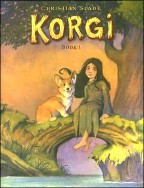GRAPHIC NOVEL REVIEW: Del Rey Manga Round-Up, Part Two
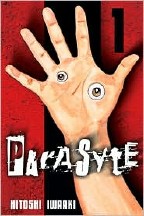 Welcome to the second week of Manga Round-Up! This time, we have four more books from [[[Del Rey Manga]]] – all first volumes in series, as new-reader-friendly as it’s possible to be – which are aimed at a slightly older audience (sixteen and up) than the books I looked at last week.
Welcome to the second week of Manga Round-Up! This time, we have four more books from [[[Del Rey Manga]]] – all first volumes in series, as new-reader-friendly as it’s possible to be – which are aimed at a slightly older audience (sixteen and up) than the books I looked at last week.
And you know what “older audience means,” don’t you? That’s right – gore! (Did you think I was going to say “sex?” That’s the 18+ manga, which none of the publishers have sent me yet.)
Leading off the parade of blood-spattered stories is Hitohi Iwaaki’s Parasyte, in which alien spores drift down to Earth and creep into people’s ears to eat their brains. The parasites, who have no name for themselves – no culture or language of any kind, actually – then eat other humans, in very violent ways. It’s hinted that this is possibly a reaction by someone or something to save the Earth from us horrible humans. (But only hinted, at the beginning, and not brought up again.)
Our viewpoint character is a teenage boy named Shin, saved from having his brain eaten because he had his earbuds in while he was sleeping. (Possible life lesson #1: never, ever stop listening to music. Possible life lesson #2: don’t sleep on the floor, as the Japanese do.) Unfortunately, the parasite still got into his body – it just took over his hand instead. Shin names the parasite Migi (since it is his right hand, and that’s the Japanese word for “right”), and tries to live with it. But the parasites are utterly amoral and protective of their secrecy, so the mere fact that Shin knows they exist means that other parasites (the ones that ate brains, and so control whole bodies) want to kill him as soon as they learn about him. And getting along with an amoral, alien right hand that can transform instantly into whirring engines of death is not easy.


 Everyone has a story – at least one. Every human life could be told in some way, to illustrate a point, or evoke an emotion, or just entertain an audience.
Everyone has a story – at least one. Every human life could be told in some way, to illustrate a point, or evoke an emotion, or just entertain an audience. 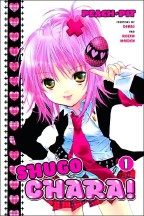 Let me be honest: I don’t know all that much about manga. I’ve read a few series (going back to
Let me be honest: I don’t know all that much about manga. I’ve read a few series (going back to 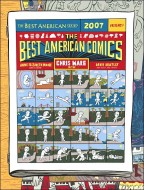 With two years of
With two years of 
 First was a cute little book (about the size of those “impulse purchase” books you sometimes see in Hallmark stores by the cash register) called Micrographica by Renee French. According to the front flap, this originally appeared online, and each of the drawings (one to a page) was originally drawn at about one centimeter square, which French did to keep the drawing loose by not allowing any redrawing. The story follows three small rodents of some kind (maybe guinea pigs?) who discover a “crapball” and then have odder adventures. It reads a bit like a black and white, colloquial version of a Jim Woodring story – weird things happen in an entertaining way, but the voices of the rodents is very modern-American, unlike Woodring. The story also features a much larger rodent-thing, unexplained facial swelling, a giant mountain of crap, an abandoned sandwich, and more. Hey, it’s only ten bucks – how can you go wrong?
First was a cute little book (about the size of those “impulse purchase” books you sometimes see in Hallmark stores by the cash register) called Micrographica by Renee French. According to the front flap, this originally appeared online, and each of the drawings (one to a page) was originally drawn at about one centimeter square, which French did to keep the drawing loose by not allowing any redrawing. The story follows three small rodents of some kind (maybe guinea pigs?) who discover a “crapball” and then have odder adventures. It reads a bit like a black and white, colloquial version of a Jim Woodring story – weird things happen in an entertaining way, but the voices of the rodents is very modern-American, unlike Woodring. The story also features a much larger rodent-thing, unexplained facial swelling, a giant mountain of crap, an abandoned sandwich, and more. Hey, it’s only ten bucks – how can you go wrong? Jeremy Tinder’s Black Ghost Apple Factory is more like a normal comics pamphlet (despite being only about four inches by six); it’s stapled, 48 pages, and contains a number of different stories. The seven stories here are all pretty clearly “indy” – they feature odd characters doing twisted versions of real-world activities, and usually have something to do with interpersonal relationships. (Also, in time-honored indy-comics fashion, those relationships are sad, depressing and unfulfilling.) Only two of the stories are overtly autobiographical — and one of those features Tinder befriending a bear, so you know it’s metaphorical at best — which is a nice change. Some of these stories are funny and some are touching; all work well and strike true. And that’s darn good a for a five-buck comics pamphlet.
Jeremy Tinder’s Black Ghost Apple Factory is more like a normal comics pamphlet (despite being only about four inches by six); it’s stapled, 48 pages, and contains a number of different stories. The seven stories here are all pretty clearly “indy” – they feature odd characters doing twisted versions of real-world activities, and usually have something to do with interpersonal relationships. (Also, in time-honored indy-comics fashion, those relationships are sad, depressing and unfulfilling.) Only two of the stories are overtly autobiographical — and one of those features Tinder befriending a bear, so you know it’s metaphorical at best — which is a nice change. Some of these stories are funny and some are touching; all work well and strike true. And that’s darn good a for a five-buck comics pamphlet. One of the major criticisms of comics like
One of the major criticisms of comics like 
 Here’s a comic book so big it makes those old tabloid editions (
Here’s a comic book so big it makes those old tabloid editions (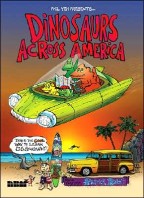 Today I’ve got three books that either are for kids or look like they should be, so, if any of you are allergic to greasy kids stuff, just move on to the next post.
Today I’ve got three books that either are for kids or look like they should be, so, if any of you are allergic to greasy kids stuff, just move on to the next post.